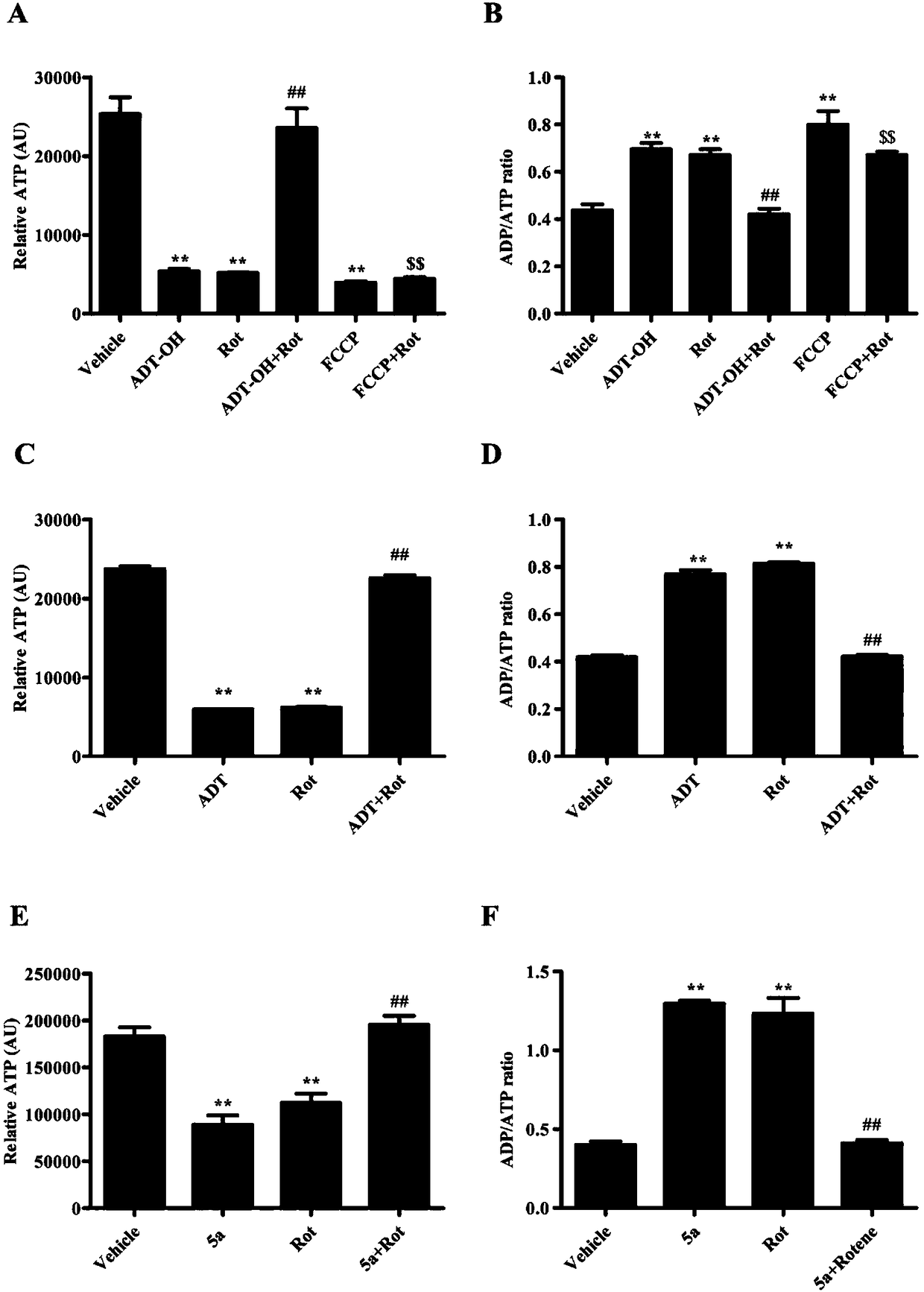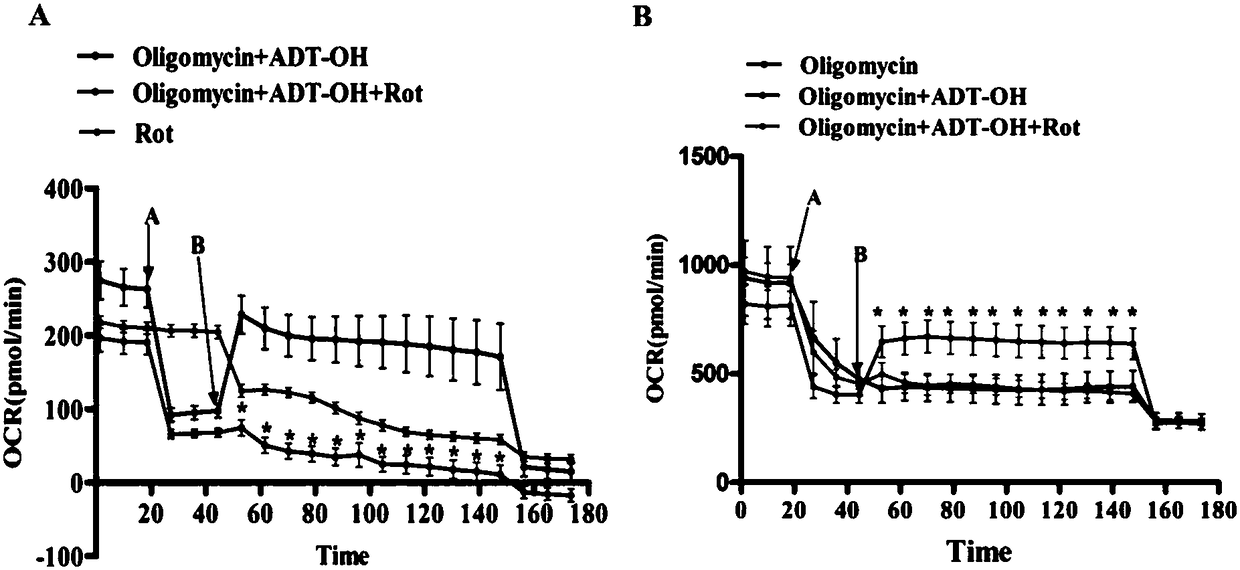Method for obtaining medicament with mitochondrial uncoupling effect
A mitochondrial uncoupling, mitochondrial technology, applied in the field of biology and medicine, to achieve high cell-specific effects
- Summary
- Abstract
- Description
- Claims
- Application Information
AI Technical Summary
Problems solved by technology
Method used
Image
Examples
preparation example Construction
[0148] 6.5 Preparation of mouse cerebral hemorrhage model, cerebral edema and behavioral detection
[0149] 6.5.1 Method for making cerebral hemorrhage model caused by injection of autologous blood into striatum
[0150] Select ICR (CD-1) male mice with a body weight of about 25g-30g, anesthetize them with chloral hydrate, place them in a stereotaxic instrument, fix them, and start the operation. Apply iodophor to the top of the head, and cut a wound with a length of 1cm on the top of the head. , Use hydrogen peroxide slurry to find the position of the anterior bregma. After determining the position of the anterior bregma, open 0.5mm in the front and 2.0mm in the side. Find the position of the needle in the left brain, and then gently drill the hole with a dental drill. For blood collection, use tail blood collection, cut an opening on the tail, draw 15 μl of arterial blood with a 50 μl micro-syringe, quickly move the syringe to the stereotaxic instrument, slowly insert the ne...
Embodiment 1
[0204] Example 1: Preliminary Screening
[0205] The inventors have found through research that the oxidation of specific sulfur-containing compounds (or the products of these sulfur compounds transformed / metabolized in vivo or in cells) by SQR can lead to reverse electron transfer (RET) at the level of complex I in the respiratory chain, resulting in mitochondrial Uncoupling. Therefore, inhibition of respiratory chain complex I can specifically inhibit SQR-mediated mitochondrial uncoupling: including inhibiting the decrease of transmitochondrial inner membrane potential (abbreviated as mitochondrial membrane potential), inhibiting the decrease of intracellular ATP level and Increase in OCR values in the presence of oligomycin. The mitochondrial uncoupling agents that have been discovered so far are protons or ionophores, and their uncoupling effects do not depend on complex I of the respiratory chain. Using this feature, the mitochondrial uncoupler or AMPK activator based...
Embodiment 2
[0211] Example 2: Confirmation that the mitochondrial uncoupling effect of candidate substances is dependent on the function of mitochondrial respiratory chain complex I
[0212] The inventors further tested whether the mitochondrial respiratory chain complex I inhibitor rotenone could block the other two important features of mitochondrial uncoupling caused by the candidate substance on microglial cells: 1) reduce intracellular ATP levels (and increase ADP / ATP ratio); 2) Increased cellular oxygen consumption (OCR) in the presence of oligomycin.
[0213] After the BV2 microglial cells endogenously expressing SQR were treated with the substances to be screened or solvents, the intracellular ATP level and ADP / ATP ratio were detected. The results showed that simple rotenone (Rot) treatment could lead to a decrease in ATP levels in BV2 microglia ( figure 2 A, 2C, 2E) and ADP / ATP ratio increased ( figure 2 B, 2D, 2F). The proton-type mitochondrial uncoupler FCCP also caused a...
PUM
 Login to View More
Login to View More Abstract
Description
Claims
Application Information
 Login to View More
Login to View More - R&D
- Intellectual Property
- Life Sciences
- Materials
- Tech Scout
- Unparalleled Data Quality
- Higher Quality Content
- 60% Fewer Hallucinations
Browse by: Latest US Patents, China's latest patents, Technical Efficacy Thesaurus, Application Domain, Technology Topic, Popular Technical Reports.
© 2025 PatSnap. All rights reserved.Legal|Privacy policy|Modern Slavery Act Transparency Statement|Sitemap|About US| Contact US: help@patsnap.com



